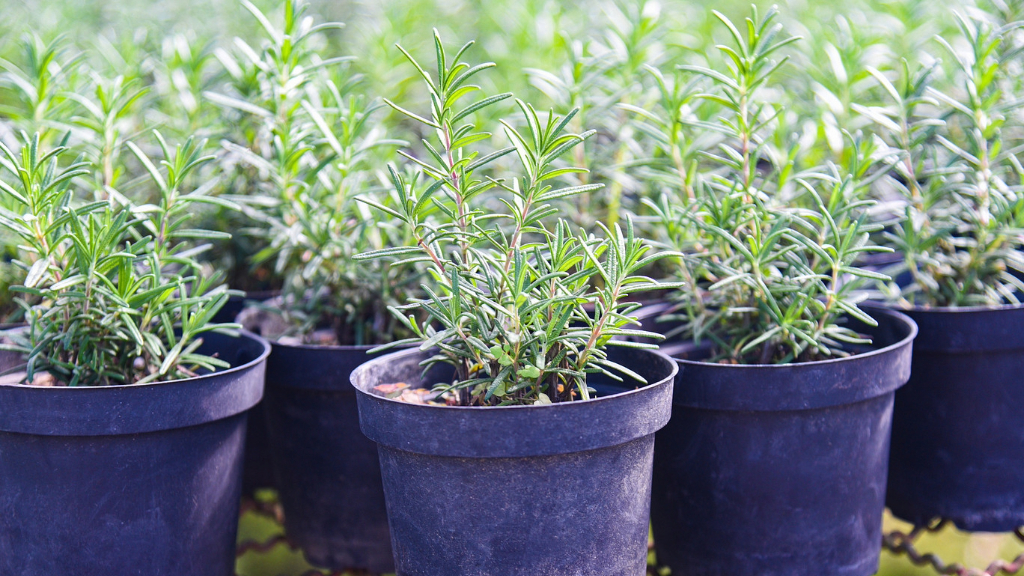
Cultivated for over 5,000 years, the rosemary plant's history is understandably steeped in legend, myth, and folklore. Rosemary herbal uses run the gamut of medicinal remedies, culinary delights or even as a love charm. It's really no wonder why its stimulating aroma and flavor have continued to enchant people for centuries.
History of Rosemary
Rosemary (Rosmarinus officinalis) has been used medicinally dating back to the ancient Greeks and Romans in 500 B.C. Dried sprigs of rosemary even showed up in Egyptian tombs from 3,000 B.C.
Discorides, a contemporary of both Pliny the Elder and Galen, also wrote of rosemary in his opus De Materia Medica, the gold standard about the use and identification of medicinal herbs for 1,400 years.
Rosemary was cultivated by the Spanish in the 13th century where it became a popular condiment for salted meats from the 15th to 18th centuries. Actually, I suspect it was used less as a condiment and more to disguise the less-than-pleasant odor and flavor of rotting meat.
Its genus name, Rosmarinus, is derived from the Latin for "dew"(ros) and "belonging to the sea" (marinus) in reference to the warm Mediterranean region of its origin. The common name of rosemary is, of course, derived from the genus name but with a twist.
Legend has it that the Virgin Mary, mother of Jesus, as she fled from Egypt, sheltered next to a rosemary bush. She threw her blue cape onto the bush and the white flowers turned blue. Because of this, the herb has long been called "rose of Mary" even if the blooms look nothing like a rose but are rather more like the mint flowers to which rosemary is related.
Additional Rosemary Plant History
Rosemary is associated with remembrance. Its earliest use was probably by Greek students. They braided garlands of the aromatic herb into their hair, which is where rosemary's other common name "herb of crowns" comes from. I do something like this whenever I trim my rosemary - stick the herb into my sweaty, messy hair. I can't recall if it helps my memory, but it sure does improve my aroma.
Sign up for the Gardening Know How newsletter today and receive a free copy of our e-book "How to Grow Delicious Tomatoes".
Rosemary is also symbolic of fidelity or, put more romantically, love. During the Middle Ages, a bride would wear rosemary in her headpiece and the groom and guests would wear a sprig as well. Prosperous wedding goers might receive a rosemary branch gilt in gold. The newlyweds would plant rosemary on their wedding day in the hopes that it would be a good omen for their future. It was said if a person tapped another with a sprig of rosemary with an open bloom, they would fall in love.
Rosemary was also incorporated into doll's clothes to attract lovers. From all of these folkloric traditions arose the concept that rosemary was a love charm.
Rosemary Herbal Uses
Rosemary's medicinal history spans centuries and was probably first used for respiratory issues. During the 13th century, the Queen of Hungary apparently was paralyzed, but a concoction of rosemary and wine fixed her right up. For years thereafter, the concoction was used to cure baldness and dandruff as well as other skin ailments. Rosemary was placed under one's pillow to prevent nightmares and was hung outside homes to thwart evil spirits.
Of course, rosemary was also used between the sheets to repel moths. By the 16th century, the marital rosemary planted with such hope by the aforementioned newlyweds was being yanked out by husbands (due no doubt to an old common saying "where rosemary flourishes, the lady rules") which basically meant women, not men, ruled the home.
We have three rosemary bushes, just saying. In successive years, rosemary was used to treat the plague, melancholy, gout, epilepsy, arthritis and many other ills. Today, the herb is still used by many as a tea to treat sore throats, and head colds and to freshen bad breath.
Rosemary is often used in cooking, but that isn't the herb's only use. The aromatic essential oil derived from the plant is found in many toiletry products. In fact, a food preservative derived from the herb is used in cosmetics and plastic food packaging.
From love potions to plastic packaging, rosemary has come a long way. Who knows what uses we'll find for the herb in the coming years. Maybe scientists will discover that rosemary oil is a new biofuel. Could happen.

Amy Grant has been gardening for 30 years and writing for 15. A professional chef and caterer, Amy's area of expertise is culinary gardening.
